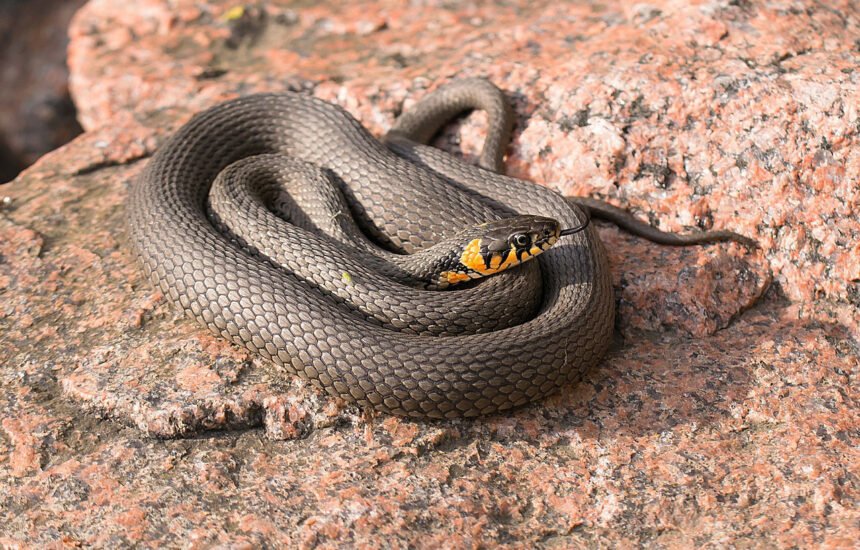Discover the edgy world of snake bite piercings in this comprehensive guide. Learn everything you need to know about this trendy lip modification, from the procedure and aftercare to styling options and potential risks. We’ll explore the history and cultural significance of snake bite piercings, walk you through what to expect during the piercing process, and provide expert tips for proper care and healing.
Dive into the various jewelry options available and understand how these piercings might impact your daily life. Whether you’re considering getting snake bite piercings or simply curious about this bold form of self-expression, this article offers valuable insights to help you make an informed decision. Get ready to sink your teeth into the fascinating realm of snake bite piercings!
Keywords: snake bite piercing, lip modification, body piercing, piercing aftercare, piercing jewelry, facial piercings, alternative fashion, body modification, piercing procedure, piercing risks
What is a Snake Bite Piercing?
Snake bite piercings are a popular form of oral piercing that involves two symmetrical punctures on either side of the lower lip, resembling the fangs of a snake. This edgy and eye-catching body modification has gained significant popularity among those seeking a bold and unique look. Snake bite piercings are typically done with labret studs or rings, allowing for various styling options to suit individual preferences.
The name “snake bite piercing” comes from the visual similarity to a snake’s bite marks, with the two piercings positioned to mimic the appearance of fang punctures. This type of piercing is part of a broader category of lip piercings, which includes other variations such as spider bites, angel bites, and dolphin bites. However, snake bite piercings stand out for their distinctive symmetrical placement and versatile aesthetic appeal.
When considering a snake bite piercing, it’s essential to understand that this modification requires careful planning and aftercare. The procedure involves piercing through the lower lip tissue, which can be more complex than other types of piercings due to the sensitive nature of the area. Professional piercers use sterile needles to create the punctures, ensuring precise placement and minimizing the risk of complications.
The Snake Bite Piercing Procedure
Getting a snake bite piercing involves several steps, and it’s crucial to choose a reputable piercing studio with experienced professionals. Here’s what you can expect during the snake bite piercing procedure:
- Consultation: The process begins with a consultation where the piercer will discuss your desired look, assess your anatomy, and explain the procedure in detail.
- Marking: The piercer will carefully mark the placement of the piercings on your lower lip, ensuring symmetry and proper positioning.
- Sterilization: The area will be thoroughly cleaned and sterilized to minimize the risk of infection.
- Piercing: Using a sterile hollow needle, the piercer will create the first puncture, followed by the second one on the opposite side of the lower lip.
- Jewelry insertion: Immediately after piercing, the chosen jewelry (typically labret studs or rings) will be inserted into the fresh piercings.
- Aftercare instructions: The piercer will provide detailed aftercare instructions to ensure proper healing and minimize complications.
It’s important to note that snake bite piercings are typically done one at a time, allowing for precise placement and reducing discomfort. The entire procedure usually takes about 15-30 minutes, depending on the individual and the piercer’s experience.
Aftercare and Healing Process for Snake Bite Piercings
Proper aftercare is crucial for the successful healing of snake bite piercings. The healing process typically takes 6-8 weeks, but it can vary depending on individual factors and how well you follow the aftercare instructions. Here are some essential aftercare tips for snake bite piercings:
- Cleansing: Gently clean the piercings twice daily with a saline solution or an alcohol-free mouthwash diluted with water.
- Avoid touching: Refrain from touching or playing with the piercings, especially with dirty hands, to prevent infection.
- Diet considerations: Stick to soft foods during the initial healing period and avoid spicy, acidic, or hot foods that may irritate the piercings.
- Oral hygiene: Maintain excellent oral hygiene by brushing your teeth and using an alcohol-free mouthwash after meals.
- Avoid makeup and lip products: Keep the piercing area free from cosmetics, lip balms, and other products during the healing process.
During the healing period, it’s normal to experience some swelling, tenderness, and mild discomfort. However, if you notice signs of infection, such as excessive redness, swelling, or discharge, consult your piercer or a healthcare professional immediately.
Snake Bite Piercing Jewelry Options
One of the appealing aspects of snake bite piercings is the variety of jewelry options available. Here are some popular choices for snake bite piercing jewelry:
- Labret studs: These consist of a flat disc on one end and a decorative top on the other, providing a sleek and subtle look.
- Captive bead rings: These circular rings feature a removable bead and offer a more noticeable appearance.
- Horseshoe barbells: These U-shaped pieces of jewelry can be worn with the ends pointing up or down for different styles.
- Seamless rings: These continuous rings provide a smooth, uninterrupted look.
When selecting jewelry for your snake bite piercings, consider factors such as material (surgical stainless steel, titanium, or bioplast), size, and style to ensure comfort and aesthetic appeal. It’s advisable to consult with your piercer about the best options for your specific anatomy and desired look.
Snake Bite Piercing: The Ultimate Guide to This Edgy Lip Modification
Snake bite piercings have become increasingly popular among body modification enthusiasts seeking a bold and distinctive look. This comprehensive guide will delve into everything you need to know about snake bite piercings, from the procedure itself to aftercare and styling options. Whether you’re considering getting snake bite piercings or simply curious about this trendy lip modification, read on to discover the ins and outs of this eye-catching form of self-expression.

What Are Snake Bite Piercings?
Snake bite piercings are a type of oral piercing that involves two symmetrical punctures on either side of the lower lip. The name “snake bite piercing” comes from the visual similarity to a snake’s bite marks, with the two piercings positioned to mimic the appearance of fang punctures. This unique placement creates a striking and edgy aesthetic that has captivated many individuals looking to make a bold statement with their appearance.
Snake bite piercings are typically done with labret studs or rings, allowing for various styling options to suit individual preferences. The versatility of these piercings is one of the reasons they have gained such popularity in recent years. Whether you prefer a subtle, understated look or a more dramatic appearance, snake bite piercings can be customized to reflect your personal style.
It’s important to note that snake bite piercings are part of a broader category of lip piercings, which includes other variations such as spider bites, angel bites, and dolphin bites. However, snake bite piercings stand out for their distinctive symmetrical placement and versatile aesthetic appeal.
The History and Cultural Significance of Snake Bite Piercings
While snake bite piercings have gained popularity in recent years, the practice of lip piercing has a rich history dating back centuries. Many indigenous cultures around the world have incorporated lip piercings into their traditional practices, often as a symbol of social status, spiritual beliefs, or rites of passage.
In modern Western culture, snake bite piercings emerged as part of the punk and alternative subcultures in the late 20th century. These piercings became a way for individuals to express their rebellion against societal norms and showcase their unique identities. As body modification has become more mainstream, snake bite piercings have transcended their subcultural origins and are now embraced by a wide range of people from various backgrounds.
Today, snake bite piercings are seen as a form of self-expression and personal adornment. They can represent individuality, creativity, and a willingness to embrace unconventional beauty standards. For many, getting snake bite piercings is a way to take control of their appearance and make a statement about their identity.
The Snake Bite Piercing Procedure: What to Expect
Getting snake bite piercings involves several steps, and it’s crucial to choose a reputable piercing studio with experienced professionals. Here’s a detailed breakdown of what you can expect during the snake bite piercing procedure:
- Consultation and Preparation
The process begins with a consultation where the piercer will discuss your desired look, assess your anatomy, and explain the procedure in detail. This is your opportunity to ask questions and address any concerns you may have. The piercer will also ensure that you’re a suitable candidate for snake bite piercings, considering factors such as your oral health and any potential complications. - Marking and Placement
Once you’ve decided to proceed, the piercer will carefully mark the placement of the piercings on your lower lip. This step is crucial for ensuring symmetry and proper positioning. The piercer will use a surgical marker to indicate where the piercings will be made, allowing you to review and approve the placement before the actual piercing begins. - Sterilization and Preparation
The area will be thoroughly cleaned and sterilized to minimize the risk of infection. The piercer will use an antiseptic solution to clean both the inside and outside of your lower lip. They will also sterilize all equipment and jewelry to be used during the procedure. - The Piercing Process
Using a sterile hollow needle, the piercer will create the first puncture. They will then insert the chosen jewelry (typically a labret stud or ring) immediately after creating the hole. This process is then repeated on the opposite side of the lower lip to create the second piercing. It’s important to note that snake bite piercings are typically done one at a time, allowing for precise placement and reducing discomfort. - Aftercare Instructions
Once both piercings are complete, the piercer will provide detailed aftercare instructions. They will explain how to clean and care for your new piercings, what to expect during the healing process, and how to identify any potential complications. It’s crucial to follow these instructions carefully to ensure proper healing and minimize the risk of infection.
The entire snake bite piercing procedure usually takes about 15-30 minutes, depending on the individual and the piercer’s experience. While the process can be uncomfortable, most people describe the pain as manageable – often comparing it to a sharp pinch that subsides quickly.
Aftercare and Healing Process for Snake Bite Piercings
Proper aftercare is crucial for the successful healing of snake bite piercings. The healing process typically takes 6-8 weeks, but it can vary depending on individual factors and how well you follow the aftercare instructions. Here are some essential aftercare tips for snake bite piercings:
- Cleansing Routine
Gently clean the piercings twice daily with a saline solution or an alcohol-free mouthwash diluted with water. Use a clean cotton swab or gauze pad to carefully clean around the jewelry, both inside and outside the mouth. Be sure to rinse your mouth with the saline solution or diluted mouthwash after eating or drinking anything other than water. - Hands Off
Refrain from touching or playing with the piercings, especially with dirty hands, to prevent infection. This includes avoiding habits like biting or chewing on the jewelry, which can irritate the piercing and prolong the healing process. - Diet Considerations
Stick to soft foods during the initial healing period and avoid spicy, acidic, or hot foods that may irritate the piercings. It’s also advisable to avoid alcohol and smoking, as these can slow down the healing process and increase the risk of complications. - Oral Hygiene
Maintain excellent oral hygiene by brushing your teeth and using an alcohol-free mouthwash after meals. Be gentle when brushing near the piercing sites to avoid irritation. Consider using a new, soft-bristled toothbrush to minimize the risk of introducing bacteria to the fresh piercings. - Avoid Makeup and Lip Products
Keep the piercing area free from cosmetics, lip balms, and other products during the healing process. These products can introduce bacteria and irritate the piercings, potentially leading to infection or delayed healing. - Be Mindful of Physical Activities
During the initial healing period, be cautious with activities that may put pressure on or irritate your new piercings. This includes intense physical exercise, contact sports, and even passionate kissing. - Stay Hydrated
Drinking plenty of water can help keep your mouth clean and promote healing. It’s especially important to rinse your mouth with water after consuming any food or beverages other than water. - Follow-up Care
Schedule a follow-up appointment with your piercer to check on the healing progress and address any concerns you may have. They can assess whether the piercings are healing properly and provide additional guidance if needed.
During the healing period, it’s normal to experience some swelling, tenderness, and mild discomfort. You may also notice some clear or slightly bloody discharge, which is part of the normal healing process. However, if you notice signs of infection, such as excessive redness, swelling, or discharge, consult your piercer or a healthcare professional immediately.
Snake Bite Piercing Jewelry Options
One of the appealing aspects of snake bite piercings is the variety of jewelry options available. Here’s a more detailed look at some popular choices for snake bite piercing jewelry:
- Labret Studs
These consist of a flat disc on one end and a decorative top on the other, providing a sleek and subtle look. Labret studs are often the initial jewelry used for snake bite piercings as they’re less likely to catch on teeth or gums. They come in various lengths to accommodate different lip thicknesses and can feature a range of decorative tops, from simple balls to intricate designs. - Captive Bead Rings
These circular rings feature a removable bead and offer a more noticeable appearance. Captive bead rings can create a bold, edgy look and are popular for those who want their piercings to stand out. They come in different diameters and bead sizes, allowing for customization based on personal preference and lip anatomy. - Horseshoe Barbells
These U-shaped pieces of jewelry can be worn with the ends pointing up or down for different styles. Horseshoe barbells offer versatility in terms of appearance and can be easily flipped up to conceal the piercing when necessary. They’re available in various sizes and can feature decorative ends for added flair. - Seamless Rings
These continuous rings provide a smooth, uninterrupted look. Seamless rings are popular for their minimalist aesthetic and comfort. They can be more challenging to insert and remove compared to other jewelry types, so it’s often best to have a professional piercer change them. - Circular Barbells
Similar to horseshoe barbells but with a full circular shape, these offer a unique look for snake bite piercings. They can be rotated to show different parts of the ring and come in various diameters and bead sizes. - Spiral Barbells
These twisted barbells can create an interesting visual effect when used in snake bite piercings. They’re available in different gauges and lengths to suit individual preferences.
When selecting jewelry for your snake bite piercings, consider factors such as material, size, and style to ensure comfort and aesthetic appeal. Common materials for body jewelry include:
- Surgical Stainless Steel: Durable and affordable, but may contain nickel, which some people are allergic to.
- Titanium: Hypoallergenic and lightweight, making it an excellent choice for those with sensitive skin.
- Niobium: Another hypoallergenic option that can be anodized to create vibrant colors.
- Bioplast: A flexible, biocompatible plastic that’s comfortable and less likely to cause irritation.
- Gold: Available in various karats, gold can be a luxurious option but should be at least 14k to minimize the risk of irritation.
It’s advisable to consult with your piercer about the best options for your specific anatomy and desired look. They can help you choose jewelry that will be comfortable, suit your style, and promote proper healing.
Potential Risks and Complications of Snake Bite Piercings
While snake bite piercings can be a beautiful form of self-expression, it’s important to be aware of the potential risks and complications associated with this type of body modification. Being informed about these risks can help you make an educated decision and take appropriate precautions. Here are some potential issues to consider:
- Infection
As with any piercing, there’s a risk of infection if proper hygiene and aftercare practices are not followed. Signs of infection may include excessive redness, swelling, pain, or discharge. In severe cases, infections can spread to other parts of the body and require medical intervention. - Allergic Reactions
Some individuals may experience allergic reactions to certain metals used in piercing jewelry. This can cause irritation, redness, and swelling around the piercing site. Choosing hypoallergenic materials like titanium or niobium can help reduce this risk. - Tooth and Gum Damage
Improperly placed snake bite piercings or ill-fitting jewelry can cause damage to teeth and gums over time. This may include tooth chipping, enamel erosion, or gum recession. Regular dental check-ups and proper jewelry selection can help mitigate these risks. - Scarring
While proper care can minimize scarring, some individuals may develop visible scars or keloids after getting snake bite piercings. This risk can be higher for those prone to keloid formation. - Speech Impediments
Initially, snake bite piercings may affect speech, causing temporary lisping or difficulty pronouncing certain sounds. While most people adapt quickly, some may experience prolonged speech changes. - Jewelry Migration or Rejection
In some cases, the body may reject the piercing, causing the jewelry to migrate or be pushed out entirely. This can result in scarring and the need to remove the piercing. - Nerve Damage
Although rare, there’s a small risk of nerve damage during the piercing process, which could lead to numbness or altered sensation in the lip area. - Excessive Bleeding
Some individuals may experience more bleeding than usual during or after the piercing procedure, especially if they have bleeding disorders or are taking blood-thinning medications. - Swallowing or Choking Hazards
There’s a small risk of accidentally swallowing or choking on loose jewelry, particularly if the jewelry becomes unscrewed or dislodged. - Interference with Medical Procedures
Snake bite piercings may need to be removed for certain medical procedures, such as MRI scans or dental work. In emergency situations, this could potentially cause delays in treatment.
To minimize these risks, it’s crucial to:
- Choose a reputable, licensed piercing studio with experienced piercers.
- Follow all aftercare instructions diligently.
- Use high-quality, appropriate jewelry.
- Maintain good oral hygiene.
- Be aware of any changes in your piercings and seek professional help if you notice any signs of complications.

The Impact of Snake Bite Piercings on Daily Life
Getting snake bite piercings can have various impacts on your daily life, both during the healing process and long-term. Here are some aspects to consider:
- Eating and Drinking
During the initial healing period, you may need to adjust your eating habits. Stick to soft foods and avoid spicy, acidic, or hot items that could irritate the piercings. Drinking through a straw can help minimize contact with the piercings. - Oral Hygiene
Maintaining excellent oral hygiene becomes even more crucial with snake bite piercings. You’ll need to be diligent about brushing, flossing, and using mouthwash to keep the piercing sites clean and prevent infection. - Kissing and Intimate Activities
It’s best to avoid kissing and oral contact during the initial healing period (6-8 weeks) to prevent infection and irritation. Even after healing, you and your partner may need to be mindful of the jewelry during intimate activities. - Speech
You may experience some difficulty speaking clearly immediately after getting the piercings. Most people adapt quickly, but it may take some time to get used to talking with the new jewelry in place. - Professional Considerations
Depending on your workplace or career aspirations, visible facial piercings like snake bites may not be acceptable. Consider whether you’ll be able to wear clear retainers or remove the jewelry during work hours if necessary. - Sports and Physical Activities
Contact sports or activities that risk impact to the face may need to be avoided during healing. Even after healing, you may need to take precautions to protect your piercings during these activities. - Travel
Metal detectors at airports and other security checkpoints may be triggered by your piercing jewelry. Be prepared to explain your piercings and possibly undergo additional screening. - Dental Appointments
You may need to remove your snake bite jewelry for dental procedures. Always inform your dentist about your piercings before appointments. - Weather Considerations
In very cold weather, metal jewelry can become uncomfortably cold against your skin. In these situations, you might prefer to switch to bioplast jewelry or use a scarf to cover your mouth area. - Self-Expression and Confidence
For many people, snake bite piercings are a form of self-expression that can boost confidence and self-esteem. However, be prepared for both positive and negative reactions from others, as facial piercings can sometimes elicit strong opinions.
Table: Snake Bite Piercing vs. Other Lip Piercings
| Piercing Type | Location | Number of Piercings | Symmetry |
|---|---|---|---|
| Snake Bites | Lower lip | 2 | Symmetrical |
| Spider Bites | Lower lip | 2 | Asymmetrical |
| Angel Bites | Upper lip | 2 | Symmetrical |
| Monroe | Upper lip | 1 | Single side |
| Labret | Center lower lip | 1 | Centered |
FAQ: Common Questions About Snake Bite Piercings
- How painful are snake bite piercings?
Snake bite piercings can cause moderate discomfort during the procedure, but pain levels vary among individuals. Most people describe it as a sharp pinch that subsides quickly. - Can I kiss with snake bite piercings?
It’s best to avoid kissing and oral contact during the initial healing period (6-8 weeks) to prevent infection and irritation. - Will snake bite piercings affect my speech?
Initially, you may experience some difficulty speaking, but most people adapt quickly. Any speech changes are usually temporary. - Can I change my snake bite piercing jewelry myself?
It’s recommended to have a professional piercer change your jewelry, especially during the healing period, to minimize the risk of complications. - Do snake bite piercings leave noticeable scars if removed?
When properly cared for, snake bite piercings typically leave minimal scarring if removed. However, some people may develop small, visible marks.
Snake bite piercings offer a unique and edgy way to express your personal style. By understanding the procedure, aftercare, and jewelry options, you can make an informed decision about whether this bold lip modification is right for you. Remember to always consult with a professional piercer and follow proper aftercare instructions to ensure the best possible outcome for your snake bite piercing experience.
Conclusion: Is a Snake Bite Piercing Right for You?
Snake bite piercings offer a unique and edgy way to express your personal style. They can be a bold statement of individuality and a form of artistic self-expression. However, the decision to get snake bite piercings should not be taken lightly.
Consider the following factors when deciding if snake bite piercings are right for you:
- Your pain tolerance and willingness to undergo the piercing procedure
- Your commitment to following thorough aftercare instructions
- Your lifestyle and whether the piercings will interfere with work or other activities
- Your overall health and any conditions that might affect healing
- Your long-term style preferences and whether you’re prepared for a potentially permanent modification
Remember that while snake bite piercings can be removed, they may leave small scars.






